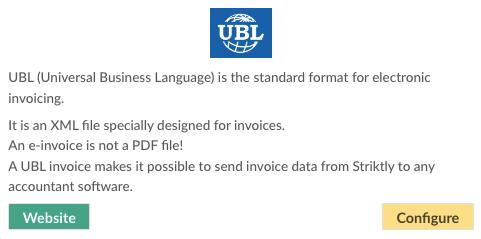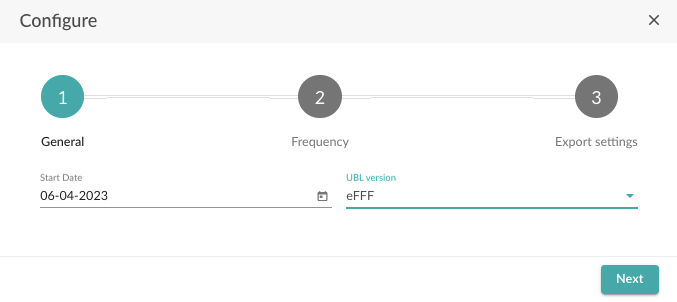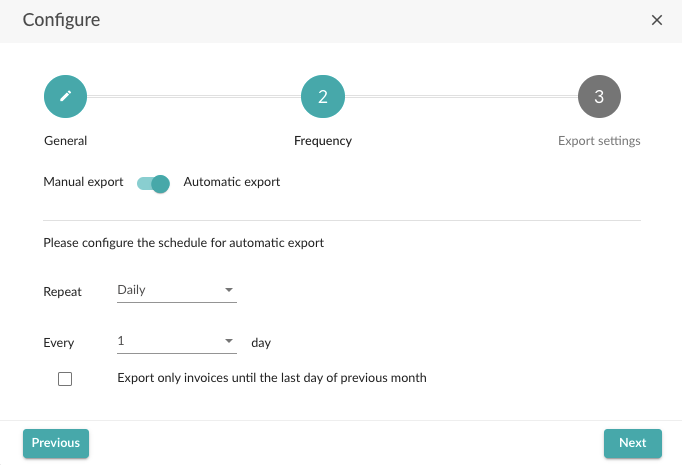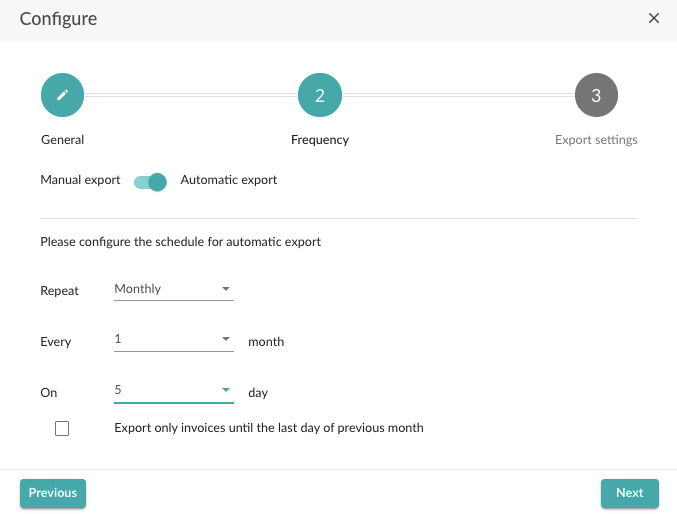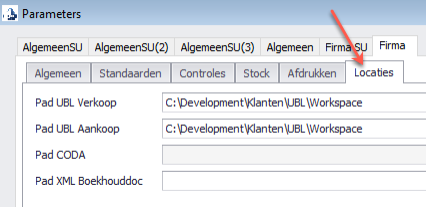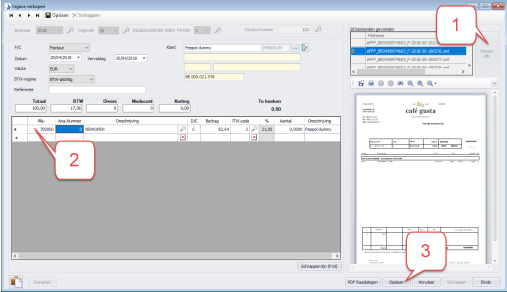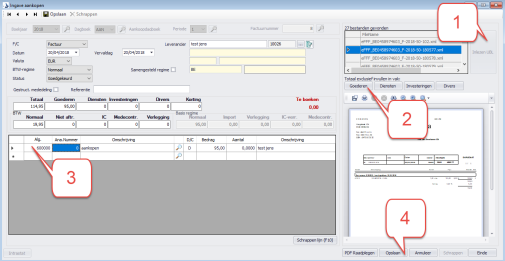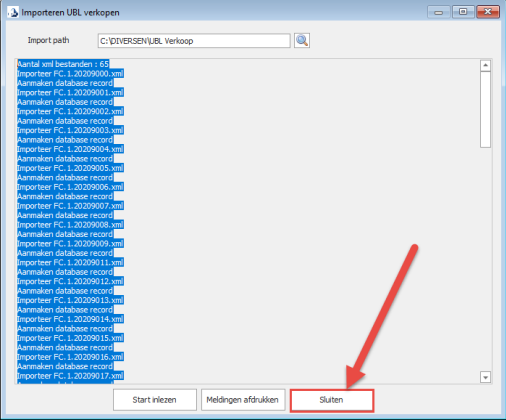How to link Go Getter with B-Wise
In the article below, we will focus on how to link Go Getter with B-Wise.
Currently, B-Wise only supports UBL import.
What do you need to successfully use this integration:
- The name of the accounting package used by your accountant
- The frequency at which the invoices should be sent
- The e-mail address the invoices should be sent to
Establish the connection:
- Log in to the admin panel and go to the "Integrations" tab.
- Navigate to UBL and select "Configure".
- On the next page, enter a start date (all invoices from this date onwards will be exported).
- In the second field, you select the UBL version supported by your accountant's software.
The UBL version is contingent upon the version supported by the accounting program that reads the UBLs. When in doubt, consult with either the accounting software manufacturer or your accountant.
- Select "Next".
On the next page, you can choose between manual or automatic export, we opt for automatic export.
- Adjust the frequency of exports. This can be daily, weekly or monthly.
- If you choose weekly or monthly, you can also specify the day on which the export should take place.
Most customers prefer scheduling a monthly export a few days into the new month, allowing for a comprehensive review by both you and your accountant.
It is important to note that filing VAT returns on a monthly basis is required, with a deadline on the 16th. To ensure adequate preparation time for your accountant, we recommend exporting data on the 5th day of the following month. Don't forget to select only the previous month's invoices before sending.
- After adjusting the settings, select "Next".
- Finally, fill in the e-mail address the invoices should be sent to.
- Select "Save".
If you have followed the steps correctly, your outbound invoices will now be automatically delivered to your accountant.
- After completion of the preceding steps, you will receive the following e-mail in your mailbox.
- Click on "Download" to download the UBL files in zip format.
- Open the file in order to extract the documents.
Efficiently streamline the UBL storage process for B-Wise by correctly placing the files from the ZIP archive on your computer.
Ensure that the directory where you place your files corresponds to the directory location indicated in B-Wise's UBL import (as indicated below).
Import UBL files in B-Wise:
Preparation:
- To upload the UBL invoices, you first need to set the location where the files are stored. You are able to set these locations for each file separately, for both sales and purchase invoices.
- If you wish to upload multiple UBL invoices simultaneously, you must correctly set the parameters under the UBL tab.
Upload sales invoices:
- To upload sales invoices, navigate to the menu and go to "Journals" - "Entry" - "Upload UBL Sales".
- On the right side of your screen, you can consult the list of UBL files. This list contains all the files saved in the location set in the company parameters.
- Select the desired file and click on "Read UBL" (1). The data will be retrieved from the file and entered on the card.
- If the software is not able to recognize the customer, you will receive a notification suggesting the creation of a new customer based on the data in the UBL file.
- The account to which the amounts should be reversed will be suggested based on the customer's default account. If there is no default account assigned yet, you will have to complete this field manually (2).
- After checking the data, save the invoice (3) and continue with the next one.
Upload purchase invoices:
- To upload purchase invoices, navigate to the menu and go to "Journals" - "Entry" - "Upload UBL Purchase".
- On the right side of your screen, you can consult the list of UBL files. This list contains all the files saved in the location set in the company parameters.
- Select the desired file and click on "Read UBL" (1). The data will be retrieved from the file and entered on the card.
- If the software is not able to recognize the customer, you will receive a notification suggesting the creation of a new customer based on the data in the UBL file.
- Next, select the column in which the total exclusive amount should be entered (2).
- The account to which the amounts should be reversed will be suggested based on the customer's default account. If there is no default account assigned yet, you will have to complete this field manually (3).
- After checking the data, save the invoice (4) and continue with the next one.
Upload multiple sales invoices simultaneously:
- In order to upload multiple sales invoices simultaneously, navigate to the menu and go to "Journals" - "Entry" - "Work table UBL sales (import in bulk)".
- Select "Import files".
- All xml files which are ready to be uploaded and which can be found in the location, which you have set in the parameters tab in the section "UBL Sales", will be imported in the work chart. The files will be validated and moved to a subfolder "Archive".
- You will be shown the screen below. Click "Close".
- You will be directed to the work chart containing all the documents that have to be imported.
The financial year and period are filled in automatically. If you encounter an error message regarding one or more invoices, simply uncheck the corresponding lines to prevent them from being uploaded.
- Select "Upload data" and the import of the selected files ("Validated") will start. Additionally, a pdf of the invoices will be created, saved and linked to the invoice.
- In case you encountered an error message for any invoices during the previous step, there are still two available options to upload your data into your B-Wise account.
- Option 1:
- Select all the relevant line(s) in the work chart and click "Delete".
- Correct the incorrect data in the external package.
- When your corrected UBL is ready, restart at "Import files" and perform the steps again.
- Option 2:
- Select all the relevant line(s) in the work chart and click "Edit xml document".
- Correct the errors manually in the xml file.
Note that there are no available screenshots in English of the above software package.

